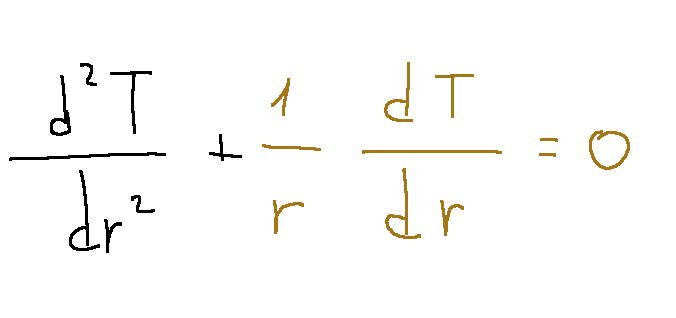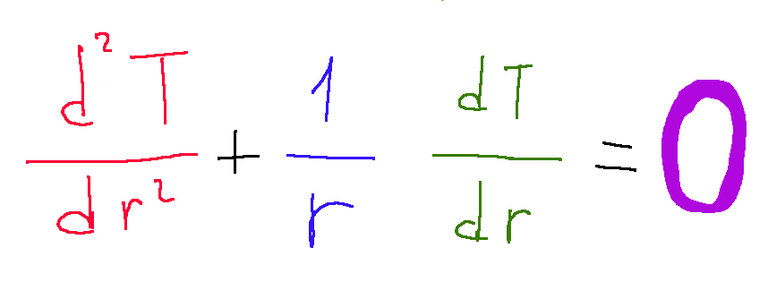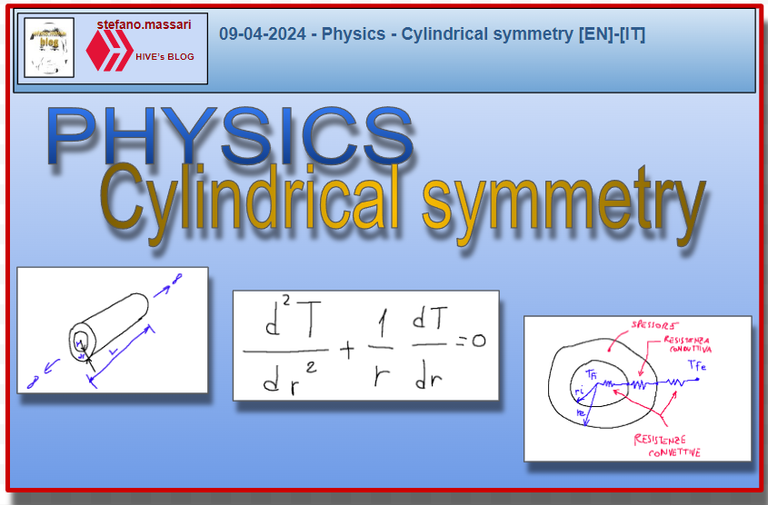
~~~ La versione in italiano inizia subito dopo la versione in inglese ~~~
ENGLISH
09-04-2024 - Physics - Cylindrical symmetry [EN]-[IT]
Cylindrical symmetry
To explain cylindrical symmetry, let's consider having a cylinder, like the one shown in the figure below.
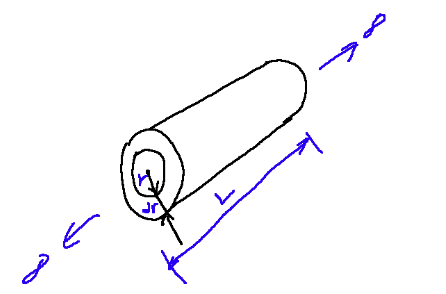
Below is the formula for the balance equation in cylindrical symmetry.
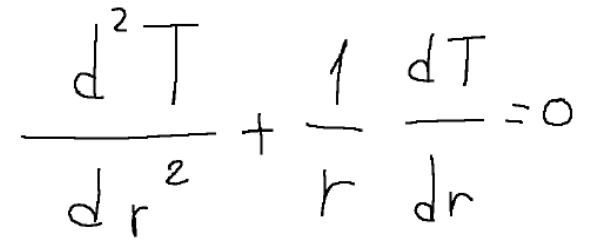
The second term of this formula, i.e. 1/r * dT/dr, takes into account the variability of the surface.
If a fluid flows both inside and outside the cylinder, the total thermal power will be as follows:

Differences between cylindrical symmetry and plane symmetry
-The first and obvious difference between cylindrical symmetry and plane symmetry results in the surfaces of the system. In cylindrical symmetry the two surfaces are not equal to each other, while in flat symmetry they are.
-The equation of plane symmetry is the following:
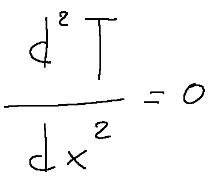
While the balance equation in cylindrical symmetry is shown below, the term that appears in addition to the previously mentioned equation is marked in the red box.
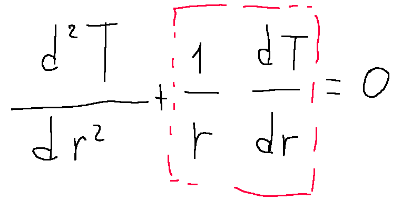
-Another difference
In the flat plate we have
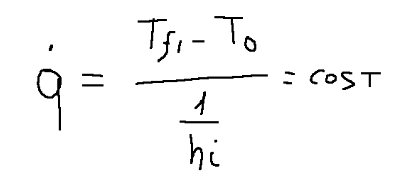
While in cylindrical symmetry we have

This means that in flat symmetry the unit heat flow is constant, while in cylindrical symmetry the total thermal power is constant.
Conductive analogy
We can reconstruct the cylinder system with the fluid flowing internally and externally by analogy by thinking about electrical conductivity. We will thus have two convective resistances generated by the flow of the fluid both internally and externally and a conductive resistance which is the thickness of the cylinder.
All this is represented in the figure below.
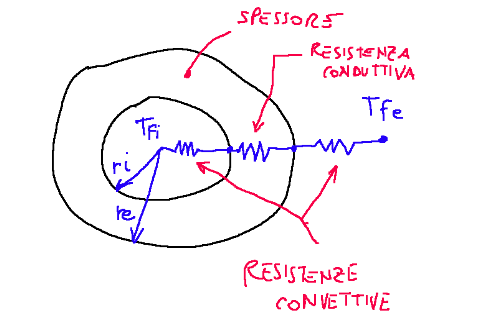
It follows that the total flow is as follows
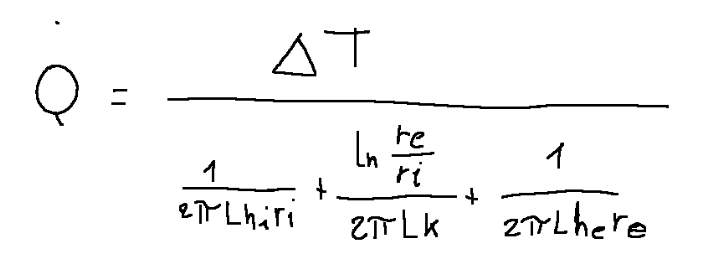
Let us now examine the following formula in which the 2π Lr exchange area is present

This means that if the thickness of the cylinder is very small compared to the internal radius, the conductive calculation is similar to the case of a flat plate with a fluid flowing on the two flat surfaces.
Conclusions
In flat symmetry the unit heat flow is constant, while in cylindrical symmetry the total thermal power is constant.
Request
Have you ever studied at school the convective resistance of the fluid passing through a cylinder?

09-04-2024 - Fisica - Simmetria cilindrica [EN]-[IT]
Simmetria cilindrica
Per spiegare la simmetria cilindrica consideriamo di avere un cilindro, tipo quello schematizzato in figura qui sotto.

Qui di seguito la formula dell’equazione del bilancio nella simmetria cilindrica.

Il secondo termine di questa formula, cioè 1/r * dT/dr, tiene conto della variabilità della superficie.
Se un fluido scorre sia all’interno che all’esterno del cilindro, avremo che la potenza termica totale sarà come segue:

Differenze tra la simmetria cilindrica e la simmetria piana
-La prima ed evidente differenza tra la simmetria cilindrica e la simmetria piana risulta nelle superfici del sistema. Nella simmetria cilindrica le due superfici non sono uguali tra loro, mentre nella simmetria piana lo sono.
-L’equazione della simmetria piana è la seguente:

Mentre qui sotto è mostrata l'equazione del bilancio nella simmetria cilindrica, nel riquadro rosso è segnato il termine che compare in più proprio rispetto all’equazione precedentemente citata.

-Altra differenza
Nella lastra piana abbiamo

Mentre nella simmetria cilindrica abbiamo

Questo significa che nella simmetria piana abbiamo che risulta costante il flusso termico unitario, mentre nella simmetria cilindrica a risultare costante è la potenza termica totale.
Analogia conduttiva
Il sistema del cilindro con il fluido che scorre internamente ed esternamente possiamo ricostruirlo per analogia pensando alla conduttività elettrica. Avremo così due resistenze convettive generate dallo scorrimento del fluido sia all’interno che all’esterno ed una resistenza conduttiva che è lo spessore del cilindro.
Tutto questo è rappresentato nella figura qui sotto riportata.

Ne consegue che il flusso totale è il seguente

Prendiamo ora in esame la seguente formula in cui è presente l’area di scambio 2π Lr

Questo significa che se lo spessore del cilindro è molto piccolo rispetto al raggio interno, il calcolo conduttivo è simile al caso di una lastra piana con un fluido che scorre sulle due superfici piane.
Conclusioni
Nella simmetria piana il flusso termico unitario risulta costante, mentre nella simmetria cilindrica è costante la potenza termica totale.
Domanda
Avete mai studiata a scuola le resistenze convettive del fluido che attraversa un cilindro?
THE END
